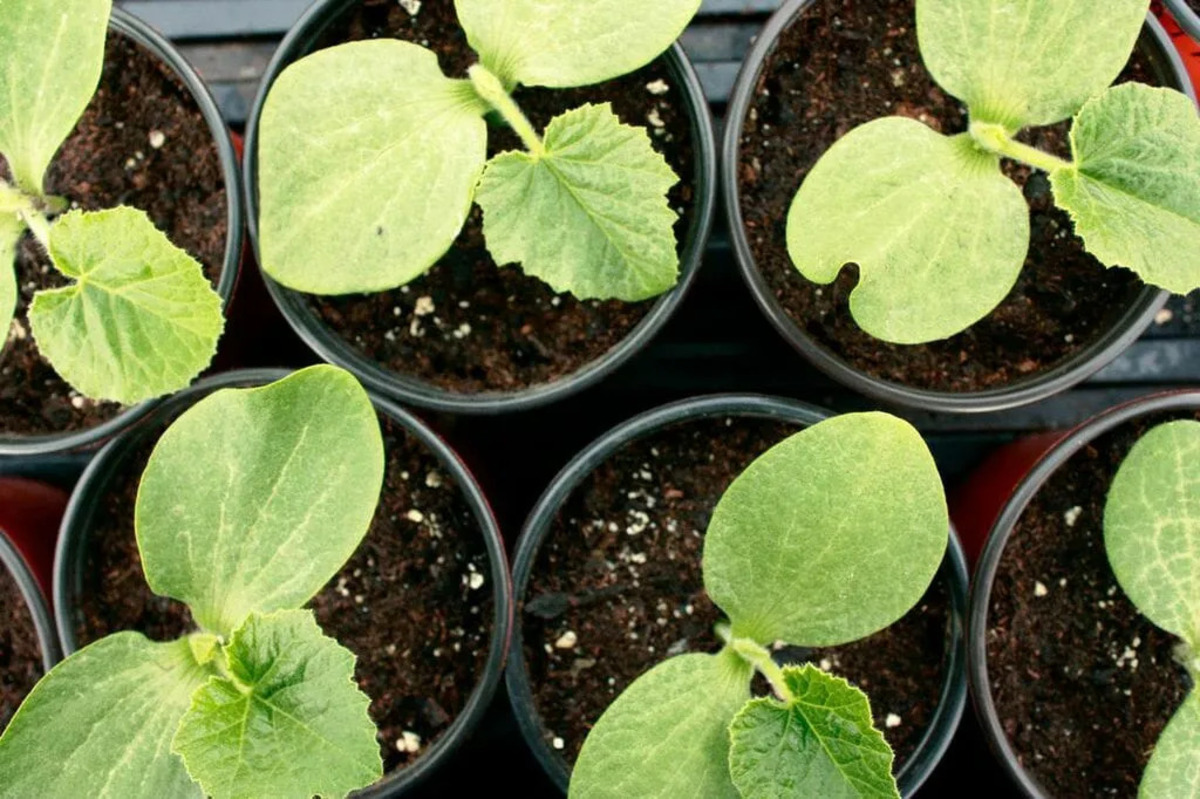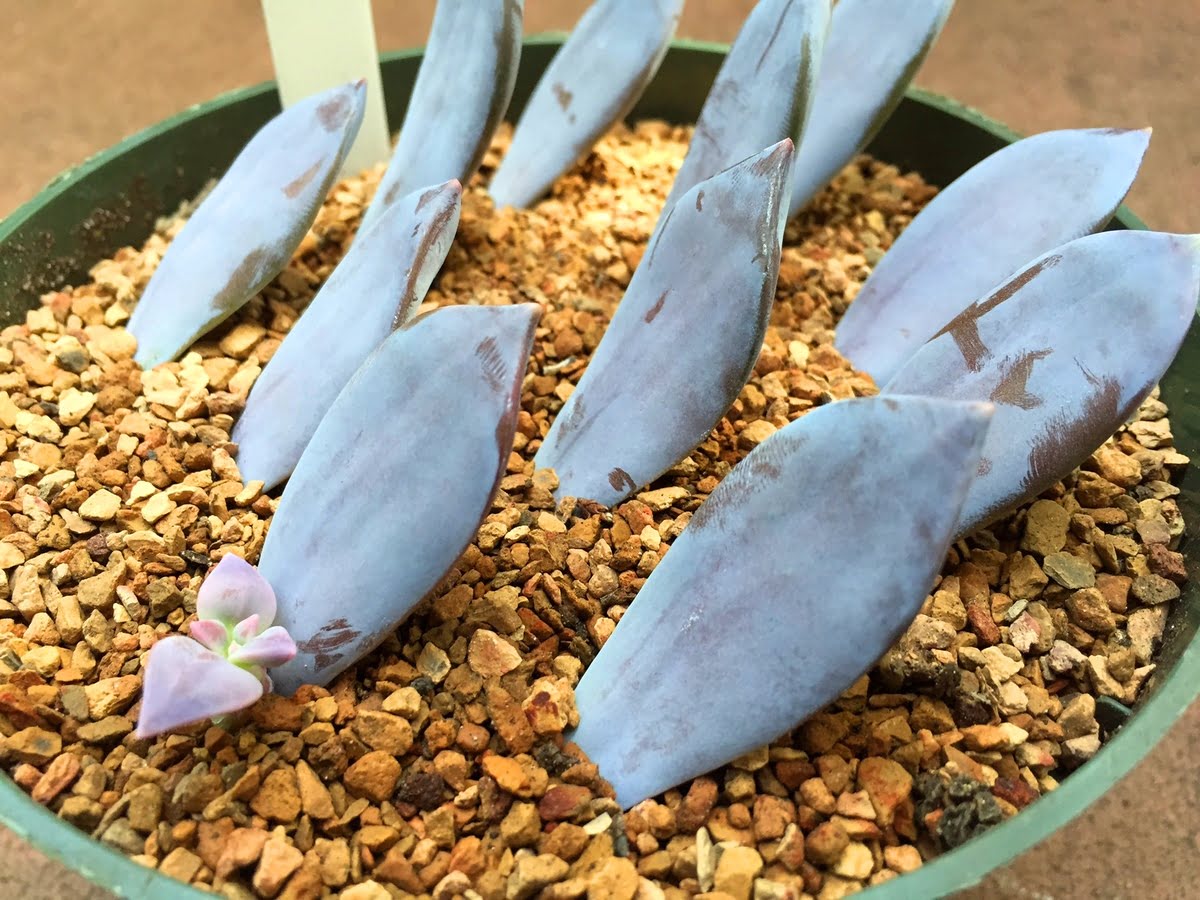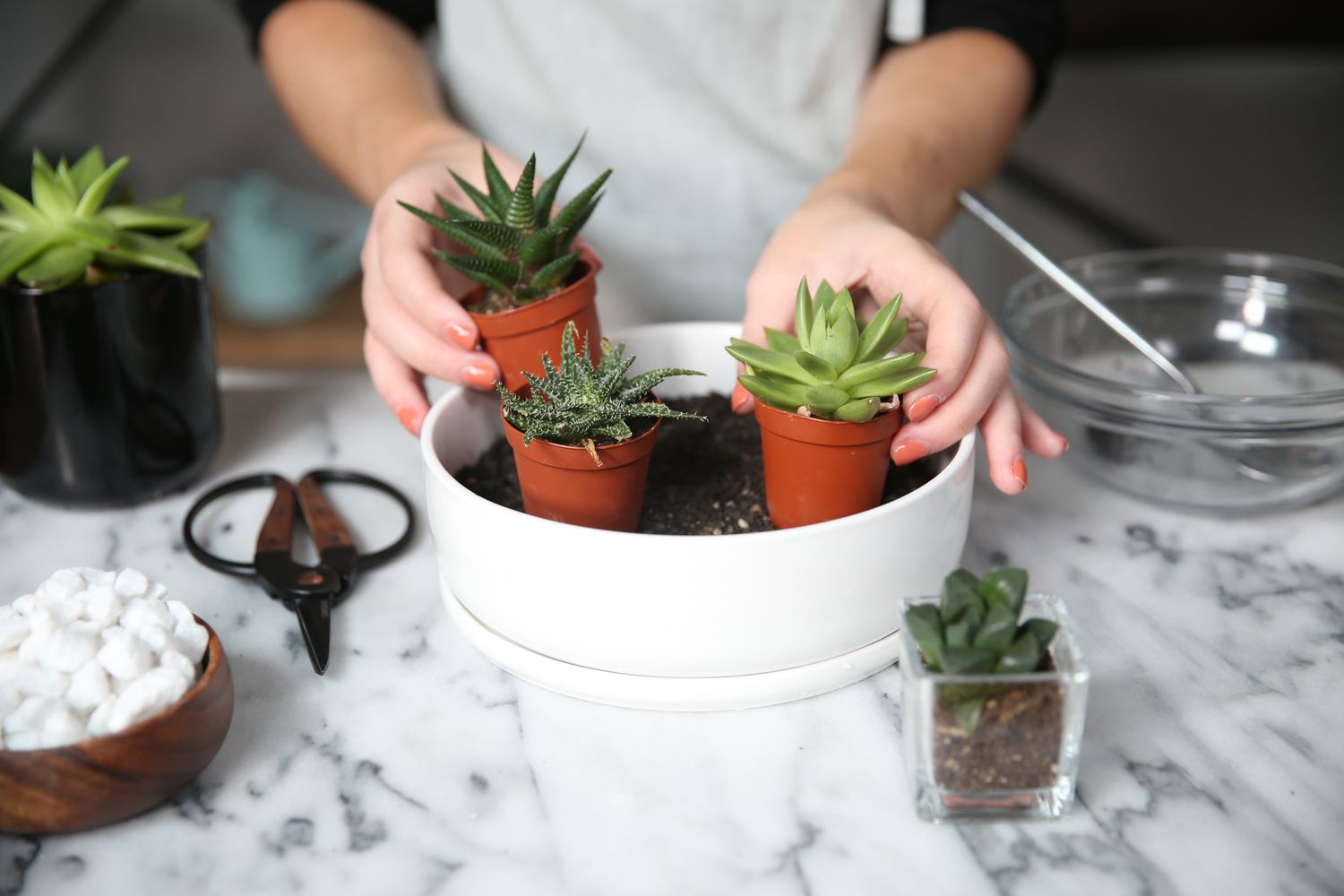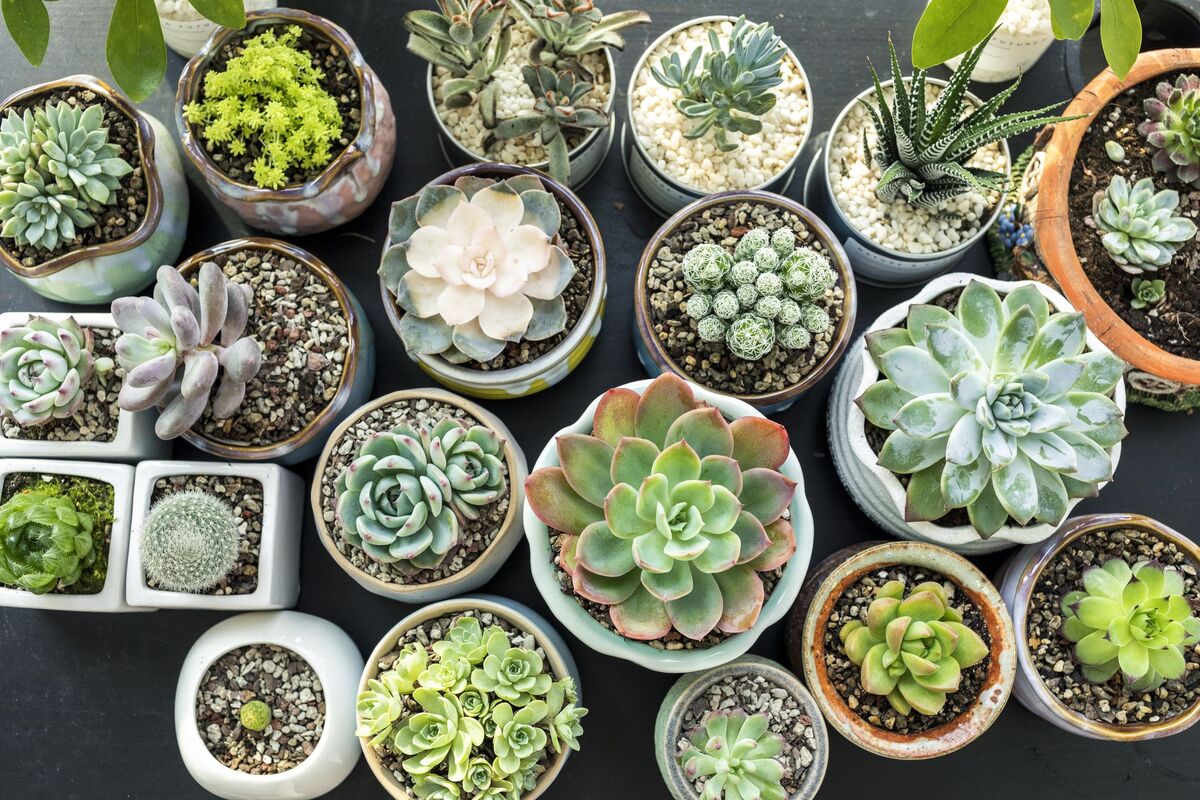Home>Types of Gardening>Ornamental Gardening>How To Plant Succulents Outside
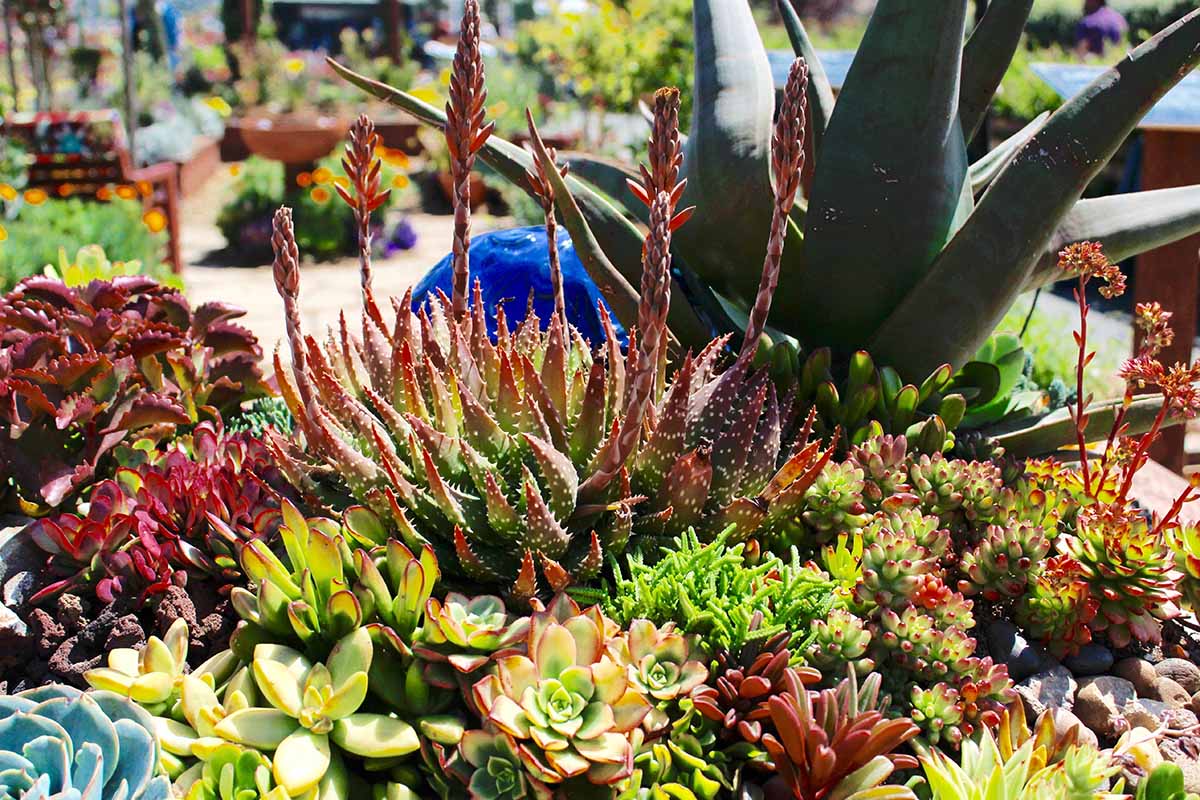

Ornamental Gardening
How To Plant Succulents Outside
Modified: January 22, 2024
Learn the art of ornamental gardening with our comprehensive guide on how to successfully plant succulents outside. Discover tips and techniques to create a breathtaking outdoor display.
(Many of the links in this article redirect to a specific reviewed product. Your purchase of these products through affiliate links helps to generate commission for Chicagolandgardening.com, at no extra cost. Learn more)
Table of Contents
Introduction
Welcome to the world of ornamental gardening! If you’re looking to add a touch of beauty and elegance to your outdoor space, planting succulents could be the perfect solution. Succulents are not only visually stunning but also low-maintenance, making them an ideal choice for both experienced and novice gardeners.
Succulents are unique plants that have evolved to thrive in arid conditions by storing water in their leaves and stems. This adaptation not only gives succulents their distinct shapes and forms but also makes them resilient and hardy. Whether you have a small garden patch or a large yard, growing succulents can add a pop of vibrant colors and interesting textures to your landscape.
In this article, we will guide you through the process of planting succulents outside. We will cover everything from choosing the right location, preparing the soil, selecting the best succulents, transplanting them, and providing proper care for their growth. You’ll also learn how to protect your succulents from extreme weather conditions and deal with common pests and diseases that may affect them. By following these tips and guidelines, you’ll be well on your way to creating a thriving and beautiful succulent garden.
Whether you’re aiming for a desert-themed garden, a vibrant rockery, or a charming pot filled with succulents on your patio, the possibilities are endless. Join us as we explore the wonderful world of ornamental gardening with succulents and discover how these fascinating plants can transform your outdoor spaces into a haven of natural beauty.
Choosing the Right Location
When it comes to growing succulents outdoors, choosing the right location is crucial for their health and growth. Succulents thrive in well-drained soil and require plenty of sunlight to flourish. Here are some key factors to consider when selecting the perfect spot for your succulent garden:
- Sunlight: Succulents need at least 6 hours of direct sunlight each day. Look for a location that receives ample sunlight, preferably in the morning or late afternoon when the sun is less intense. If you live in an area with extremely hot summers, provide some shade during the hottest part of the day to prevent sunburn on your succulents.
- Soil Drainage: Succulents are susceptible to root rot if planted in soil that retains too much water. Ensure that the location you choose has well-drained soil, or amend the soil with aggregates like perlite or pumice to improve drainage. Avoid areas with compacted or clayey soil, as it can cause water to pool around the roots.
- Protection from Frost: If you live in a region with cold winters, it’s important to consider the frost tolerance of your succulents. While some succulents can withstand frost, others are more sensitive. If you’re unsure about the hardiness of your succulents, choose a location that offers some protection from frost, such as near a wall or under the eaves of a building.
- Wind Exposure: Succulents generally prefer locations with moderate air circulation. Strong winds can cause damage to their leaves and stems, so select a spot that offers some shelter from gusty winds. If necessary, you can create windbreaks using hedges, fences, or other structures.
Additionally, it’s important to assess the space available for your succulent garden. Consider the size of the plants you plan to grow and allow enough room for them to spread out as they mature. If you have limited space, you can opt for container gardening and place the pots in a sunny spot that meets the requirements mentioned above.
By carefully considering these factors, you can provide an optimal environment for your succulents to thrive and showcase their natural beauty. Remember, a well-chosen location sets the foundation for a successful and visually appealing succulent garden.
Preparing the Soil
Preparing the soil is a critical step in creating a healthy environment for your succulents to grow and flourish. Succulents require well-drained soil that allows excess water to flow away from their roots. Follow these steps to prepare the soil for your succulent garden:
- Assess the Soil: Start by assessing the existing soil in your desired planting area. Succulents thrive in soil that is slightly acidic to neutral, with a pH range of 6.0 to 7.0. If your soil is overly clayey or compacted, it’s recommended to amend it to improve drainage and aeration.
- Remove Debris: Clear the planting area of any weeds, rocks, or other debris that could impede the growth of your succulents. This will create a clean and tidy space for your plants to take root.
- Amend the Soil: If your soil is heavy or doesn’t drain well, you can amend it with coarse sand, perlite, or pumice to improve drainage. Mix these amendments into the soil at a ratio of 1:1 or according to the specific requirements of your succulents.
- Organic Matter: Adding organic matter, such as compost or well-rotted manure, can help improve the soil’s fertility and overall structure. However, be cautious not to overdo it, as succulents prefer lean soil with low levels of organic matter.
- Level the Soil: Once you have amended the soil, level it out using a rake or garden tool. Make sure the soil surface is even and smooth for planting your succulents.
Remember, succulents are adapted to survive in nutrient-poor soils, so avoid using fertilizers that are high in nitrogen. Excessive nutrients can lead to leggy growth or cause the plants to lose their vibrant colors.
Furthermore, if you’re opting for container gardening, ensure that you use a well-draining potting mix specifically formulated for succulents. These mixes usually contain a blend of sand, perlite, and other amendments that promote proper drainage and help prevent root rot.
By taking the time to prepare the soil properly, you’ll create an environment that is conducive to the health and growth of your succulents. This will give them a strong foundation and set them up for success in your ornamental garden.
Selecting the Succulents
Choosing the right succulents for your garden is essential for creating a visually appealing and cohesive design. With the vast array of shapes, sizes, and colors available, you have plenty of options to explore. Here’s what you should consider when selecting succulents for your ornamental garden:
- Climate Suitability: Before purchasing succulents, determine your climate zone and choose varieties that are well-suited for your area. Some succulents are more heat-tolerant, while others thrive in cooler climates. By selecting succulents that are adapted to your local conditions, you increase their chances of success.
- Growth Habit: Succulents come in a range of growth habits, including rosettes, trailing vines, compact mounds, and architectural structures. Consider the growth habits of the succulents you’re interested in and how they will complement each other in your garden design.
- Colors and Textures: Succulents are known for their diverse selection of colors and textures. Choose plants that have vibrant hues, such as deep greens, blues, purples, or even striking variegated patterns. Consider the textures of the leaves as well, ranging from smooth and glossy to bumpy and spiky, to create visual interest in your garden.
- Size and Scale: Take into account the available space in your garden when selecting succulents. Make sure to choose varieties that will fit well and not overcrowd the area as they mature. Some succulents stay small and compact, while others can grow quite large, so plan accordingly.
- Complementary Plantings: Consider how the succulents will complement other plants in your garden, whether they are other succulents, flowers, or shrubs. Choose varieties that will create a harmonious and balanced composition when planted together.
When exploring your options, it’s helpful to visit local nurseries or garden centers that specialize in succulents. This way, you can see the plants in person, get expert advice, and have the opportunity to ask questions about care and maintenance.
Don’t be afraid to mix and match different succulent varieties to create an eye-catching and dynamic landscape. Experiment with different combinations and arrangements to find what works best for your personal style and preferences.
Keep in mind that succulents can be easily propagated, allowing you to expand your collection or create duplicates of your favorite plants. This offers endless possibilities for experimentation and personalization in your succulent garden.
By carefully selecting a diverse array of succulents, you can build a stunning and enchanting garden that will captivate and delight. Let your creativity shine as you curate your collection of succulents and transform your outdoor space into a living work of art.
Digging the Planting Holes
Once you have chosen the perfect succulents for your garden, it’s time to dig the planting holes. Properly preparing the holes will provide the ideal environment for your succulents to settle in and establish strong root systems. Here’s a step-by-step guide to digging the planting holes:
- Mark the Spot: Use a marker or spray paint to indicate where you want to place each succulent. This will help you visualize the layout and spacing before digging.
- Size and Depth: The size and depth of the planting holes will depend on the root structure and size of your succulents. As a general guideline, the hole should be wide enough to accommodate the roots and about as deep as the height of the root ball.
- Remove Existing Vegetation: Clear away any grass, weeds, or other vegetation from the hole to create a clean planting space.
- Loosen the Soil: Use a garden trowel or fork to loosen the soil at the bottom of the hole. This will promote better root penetration and help prevent water accumulation.
- Backfill with Soil: Fill the hole with a well-draining soil mixture, such as a blend of potting mix and sand or perlite. Make sure the soil level is slightly lower than the surrounding ground to prevent excessive water accumulation around the succulent’s base.
- Planting Technique: Gently remove the succulent from its nursery pot, taking care not to damage the roots. Place the succulent in the prepared hole, ensuring that it sits at the same depth as it was in its original container.
- Backfill and Firm the Soil: Fill in the remaining space around the roots with the soil mixture, gently pressing down to secure the plant in place. Avoid compacting the soil too tightly, as it may hinder water penetration.
- Watering: After planting, give your succulents a thorough watering to settle the soil around the roots. Be cautious not to overwater, as succulents are drought-tolerant and do not thrive in overly moist conditions.
Remember to space your succulents according to their growth habits and expected mature sizes. This will ensure that they have enough room to spread out and that the garden maintains a visually appealing balance.
If you’re planting succulents in containers, make sure to choose pots with drainage holes to prevent water from pooling around the roots. Follow the same steps mentioned above, adjusting the hole size and potting mix accordingly to suit the container.
By carefully digging the planting holes and providing a suitable soil environment, you give your succulents the best chance of thriving and flourishing in your ornamental garden.
Transplanting the Succulents
Transplanting succulents is an important step in their journey from nursery to your garden. This process ensures that they are properly placed in their new environment, allowing them to settle in and continue growing. Follow these guidelines to successfully transplant your succulents:
- Timing: The best time to transplant succulents is during their active growing season, typically in the spring or early summer. This allows them to establish roots before the onset of colder weather.
- Preparing the Plant: Before transplanting, gently remove the succulent from its current container or nursery pot. Take care not to damage the roots or disturb the soil around them.
- Inspecting the Roots: Once the succulent is out of its pot, carefully inspect the roots. Trim away any damaged or rotting roots with clean and sharp garden shears or scissors.
- Allowing for Recovery Time: If the succulent has been tightly root-bound in its nursery pot, gently loosen the roots before transplantation. This will encourage proper growth and prevent rootbound issues in the future.
- Digging the Hole: Prepare a planting hole in your garden or the desired location, following the guidelines mentioned in the previous section. The hole should accommodate the size and depth of the succulent’s root ball.
- Transplanting: Place the succulent in the planting hole, making sure the level of the soil is the same as it was in its previous container. Backfill the hole with the soil mixture, gently firming it around the roots. Avoid packing the soil too tightly.
- Watering: Give the newly transplanted succulent a thorough watering to settle the soil and help the roots establish contact with the surrounding soil. After that, water sparingly and only when the soil has dried out.
- Providing Shade and Protection: If the succulent shows signs of stress or if the weather is particularly hot, provide some shade for a few days to allow the plant to adjust. You can use a garden cloth or create temporary shading using garden stakes and fabric.
It’s important to note that succulents may experience a bit of shock and adjustment after being transplanted. They may show signs of wilting or drooping, but with proper care and time, they will recover and resume healthy growth.
For potted succulents, the transplanting process is similar. Choose a suitable container with good drainage, transfer the succulent, and follow the steps outlined above. Ensure the pot is large enough to accommodate the plant’s root ball and leave enough space for future growth.
Remember to monitor the transplanted succulents closely in the days following transplantation. Observe their response to the new environment and make adjustments as needed to ensure their continued health and growth.
By following these guidelines, you can successfully transplant your succulents and provide them with a fresh start in your ornamental garden.
Watering and Caring for Succulents
Proper watering and care are essential for the health and success of your succulents. While these plants are known for their drought tolerance, they still require regular care to thrive. Here are some important guidelines to follow when watering and caring for your succulents:
- Watering Frequency: Succulents have adapted to survive in arid conditions by storing water in their leaves and stems. They prefer infrequent, deep watering rather than frequent shallow watering. Allow the soil to dry out completely between waterings to prevent overwatering, which can lead to root rot and other issues.
- Watering Technique: When watering your succulents, aim to wet the entire root ball, ensuring that water reaches the roots. Pour water around the base of the plant, avoiding wetting the leaves as this can lead to rot. Allow the excess water to drain away fully.
- Seasonal Adjustments: Adjust your watering routine based on the season and weather conditions. During hotter summer months, succulents may require more frequent watering, while in cooler months, they may need less. Pay attention to signs of stress, such as wrinkled leaves, which indicate the need for more water.
- Container Drainage: If you’re growing succulents in pots or containers, ensure they have proper drainage holes. Excess water can quickly accumulate in containers, leading to root rot. A well-draining potting mix and adequate drainage holes are key to preventing waterlogged soil.
- Temperature and Sunlight: Succulents thrive in bright sunlight but can be sensitive to extreme heat. Provide shade or afternoon protection during scorching summer days to prevent sunburn. Similarly, protect them from frost or freezing temperatures in colder climates.
- Fertilization: Succulents typically do not require frequent fertilization. In fact, too much fertilizer can lead to leggy growth and loss of vibrant colors. Use a balanced, diluted succulent fertilizer sparingly, following the manufacturer’s instructions.
- Pruning and Grooming: Remove any dead or damaged leaves or stems to maintain the overall health and appearance of your succulents. Pruning can also encourage bushier growth and prevent overcrowding. Use clean and sharp pruners or scissors for this task.
- Pests and Diseases: Monitor your succulents for signs of pests, such as mealybugs or aphids, and take appropriate measures to control them. Avoid overwatering and provide good air circulation to prevent fungal diseases.
Remember that every succulent has its own specific care requirements, so take the time to research and understand the needs of each variety in your garden. Observing your plants closely and responding to their signals will help you provide the perfect care for their growth and overall well-being.
Lastly, enjoy the process of caring for your succulents and watching them flourish. These remarkable plants are not only beautiful but also rewarding to nurture and maintain.
Protecting Succulents from Extreme Weather
Succulents are naturally adapted to withstand harsh conditions, but they may still require some protection from extreme weather events. Here are some tips to safeguard your succulents from adverse weather conditions:
- Heat and Sun: While succulents generally love sunlight, intense heat and scorching sun can cause damage. If you live in an area with hot summer temperatures, provide some shade during the hottest part of the day. This can be done using shade cloth, patio umbrellas, or by placing the succulents under the shade of taller plants or structures.
- Frost and Freezing Temperatures: Many succulents are not frost-tolerant and can suffer damage when exposed to freezing temperatures. If you experience frost in your area, cover your succulents with frost blankets or move container-grown succulents indoors or to a sheltered location to protect them from frostbite.
- Extreme Rainfall: Succulents are susceptible to root rot if left in overly wet conditions. During periods of heavy rainfall or during the rainy season, ensure that the soil has proper drainage to prevent water from pooling around the roots. If necessary, cover susceptible succulents with plastic or install rain covers to shield them from excessive moisture.
- High Winds: Strong winds can damage or uproot succulents, particularly taller or top-heavy varieties. Consider creating windbreaks using structures like fences, hedges, or wind-blocking fabrics to shield your succulents from gusty winds. Alternatively, you can temporarily move potted succulents to more sheltered areas.
- Hailstorms: Hail can be extremely damaging to succulents, causing bruising, scarring, or even complete destruction of the plants. If a hailstorm is forecasted, move your container-grown succulents to a covered area or provide them with temporary protection using cloths, buckets, or other improvised shelter options.
Additionally, it is essential to choose succulent varieties that are better suited to your local climate. Selecting heat-tolerant or cold-hardy succulents that are adapted to your specific region will provide them with a higher chance of surviving extreme weather conditions.
Regular observation and quick action are key to minimizing the impact of extreme weather on your succulents. Assess your garden after extreme weather events and take necessary steps to repair, replace, or provide additional care to any affected plants.
Remember, succulents are resilient plants, and with proper care and precautions, you can help them thrive even in challenging weather conditions.
Dealing with Pests and Diseases
Like all plants, succulents are susceptible to pests and diseases. However, with proper care and vigilance, you can minimize the risk and keep your succulents healthy. Here are some strategies for dealing with pests and diseases:
- Identify the Problem: Regularly inspect your succulents for signs of pest infestation or disease. Look for common pests such as mealybugs, aphids, scale insects, or spider mites. Detecting and identifying the problem early allows you to take swift action.
- Remove Pests By Hand: For minor pest infestations, you can manually remove insects by wiping them off with a cotton swab dipped in rubbing alcohol. Pay special attention to leaf axils and undersides, where pests often hide.
- Natural Remedies: Consider natural remedies to control pests. These can include spraying the affected plants with a mixture of mild dish soap and water or using neem oil, which is an organic pest control option. Be sure to follow the instructions and use these remedies sparingly.
- Chemical Treatment: If the pest infestation is severe or natural remedies haven’t been effective, you may need to resort to chemical insecticides. Choose products specifically formulated for succulents and follow the instructions carefully to avoid any harm to the plants or the environment.
- Preventive Measures: Maintain good plant hygiene by regularly removing dead leaves and debris from the base of your succulents. This helps eliminate hiding places for pests and reduces the risk of diseases. It’s also beneficial to quarantine new plants before introducing them to your existing collection to prevent the spread of pests or diseases.
- Avoid Overwatering: Overwatering can create an environment that promotes fungal diseases. Ensure your succulents have well-draining soil and water appropriately, allowing the soil to dry out between watering sessions.
- Provide Proper Ventilation: Good air circulation helps prevent the development of fungal diseases. Avoid overcrowding your succulents and ensure they have enough space between them for proper airflow.
- Seek Expert Advice: If you are unsure how to identify or treat a specific pest or disease, consult a local horticulturist or gardening expert. They can provide proper guidance and recommend suitable solutions for your specific situation.
Remember, prevention and early intervention are key when dealing with pests and diseases. Regularly monitoring your succulents, practicing good plant hygiene, and providing optimal growing conditions will go a long way in keeping them healthy and pest-free.
By being proactive and taking appropriate measures, you can protect your succulents from potential threats and enjoy a thriving and beautiful ornamental garden.
Tips for Successful Succulent Gardening
Growing succulents can be a rewarding and enjoyable experience. To ensure the success of your succulent garden, consider these helpful tips:
- Start with Healthy Plants: Begin your succulent garden with healthy, quality plants. Look for plants with vibrant colors, firm leaves, and no signs of pests or diseases.
- Choose the Right Containers: If growing succulents in containers, select pots with drainage holes to prevent waterlogging. Opt for porous materials like terracotta or clay, as they allow for better airflow and moisture regulation.
- Use Well-Draining Soil: Use a well-draining succulent soil mix or create your own blend by combining potting mix with coarse sand or perlite. Avoid heavy or compacted soils that can lead to waterlogged roots.
- Water Sparingly: Succulents are adapted to thrive in dry environments. Water sparingly, allowing the soil to dry out between waterings. Be cautious not to overwater, as this can cause root rot.
- Provide Adequate Sunlight: Succulents need plenty of sunlight to maintain their vibrant colors and compact growth. Place them in a location that receives at least six hours of direct sunlight per day.
- Protect from Extreme Temperatures: Shield your succulents from extreme temperatures. Provide shade during scorching summer days and protect them from frost or freezing temperatures in colder climates.
- Prune and Propagate: Regularly trim dead leaves and use them to propagate new succulents. Pruning promotes bushier growth and keeps your plants looking neat and tidy.
- Rotate Plants: Rotate your succulents to ensure even growth. This prevents leaning or stretching towards the light source and promotes balanced development.
- Feed Sparingly: Succulents have low nutrient requirements. Use a balanced, diluted fertilizer specifically formulated for succulents during the growing season, but avoid excessive or frequent feeding.
- Protect from Pests and Diseases: Regularly monitor your succulents for pests and diseases. Keep the garden clean, practice good plant hygiene, and take quick action at the first sign of an issue.
- Experiment and Have Fun: Don’t be afraid to experiment with different succulent varieties, arrangements, and decorative elements. Succulents offer endless possibilities for creativity, so enjoy the process and let your gardening skills flourish.
Remember, each succulent has its own unique needs and preferences. Take the time to research and understand the specific requirements of the succulents in your collection to ensure their successful growth.
With these tips in mind, you can create a stunning and thriving succulent garden that will bring joy and beauty to your outdoor space.
Conclusion
Congratulations! You are now equipped with the knowledge and tips to create a flourishing and visually captivating succulent garden. By choosing the right location, preparing the soil, selecting suitable succulents, and following proper planting and care techniques, you can enjoy the beauty and benefits of these unique plants.
Remember, succulents are adapted to thrive in arid conditions, so it’s important not to overwater them. Allow the soil to dry out between waterings and provide plenty of sunlight to ensure their optimal growth.
Keep an eye out for pests and diseases, promptly addressing any issues to prevent their spread. Pruning, rotating plants, and feeding sparingly will help maintain the health and appearance of your succulents. Don’t be afraid to experiment with different arrangements and varieties to create an intriguing landscape.
As you continue your succulent gardening journey, remember that each plant has its own unique care requirements. Take the time to understand their specific needs and respond accordingly for the best results.
Enjoy the process of tending to your succulents, as gardening can be a therapeutic and fulfilling activity. Embrace the beauty and diversity of succulents as you watch them grow, thrive, and bring a touch of nature’s splendor to your outdoor spaces.
Now, go forth and create your own stunning succulent garden. Happy gardening!
